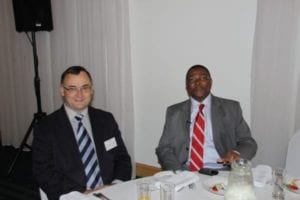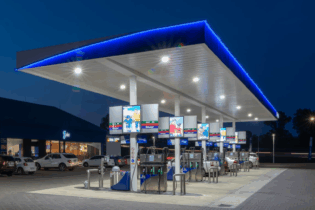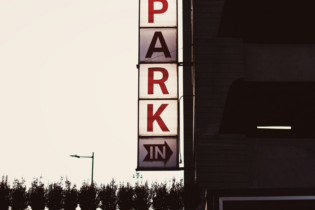Transnet’s ‘Back to Rail’ strategy is a much talked about concept within the transport industry, particularly the road freight industry, but there has been very little understanding as to the ‘what’ and ‘wherefores’ of it all – until now.
Transport World Africa’s business breakfast was held at the Killarney Country Club on 19 April 2012 and hosted by FACE2FACE, a 3S Media interactive forum. At the event, Siyabonga Gama, CEO of Transnet Freight Rail (TFR), detailed TFR’s ‘Back to Rail’ strategy. Guided by Transnet’s overriding Market-Driven Strategy, which focuses on bulk transport over distances greater than 250 km, TFR will develop its rail infrastructure along the main transport corridors and a select number of branch lines where financial viability exists – a big client with regular bulk loads. Other than this, TFR will privatise some branch lines and discontinue others. It is also envisaged that company will establish product-oriented bulk depots, e.g. manganese, iron ore, coal, chrome and bulk general goods such as grain in select locations across the country. TFR’s strategy is based on a qualified assessment of the state of South Africa’s current rail infrastructure, costs of repair and maintenance, capital requirements and future market demands. Rail transport opportunities in South Africa Looking forward, TFR expects the total transport demand in South Africa to grow to 2 000 Mtpa over the next 30 years, based on the following appraisal:| Commodity | Drivers |
|
– Driven by Eskom’s consumption and migration from road to rail for power stations – A sustained strong demand for South African coal with the emergence of China and India as net importers of thermal coal. |
|
Domestic and regional consumption of steel will fuel demand for iron ore and new iron ore export project from Thabazimbi to Richards Bay/Maputo. |
|
South Africa’s share of world output is set to grow with expansion projects planned by both traditional miners and junior miners. |
|
Rail container volumes are expected to increase in line with Freight Rail’s objective of increasing market share along key intermodal routes such as the Natcor (Gauteng to Durban main line). |
|
Volumes are expected to increase in line with South Africa’s GDP growth (4% on average). Freight Rail is also targeting rail-friendly volumes in this sector. |
|
Demand mainly from China remains strong and is driven by increased steel production. Export growth indicates modest increase and domestic consumption is set to grow once local beneficiation projects are started. |
|
The domestic harvests are approximately 10 Mtpa to 14 Mtpa. Demand represents TFR’s increased share of total market demand as more traffic is shifted from road to rail. |
|
Demand projections indicate increased volumes by rail in support of the New Multi Products Pipeline and increased cross-border demand from Botswana and Mozambique. |
| Table 1: Total logistics costs as a percentage of GDP for selected countries (ranked by GDP) | ||
| Country |
Survey year |
% of GDP |
| Morocco |
2006 |
20.0% |
| Finland |
2008 |
19.0% |
| Thailand |
2007 |
18.9% |
| China |
2006 |
18.0% |
| South Africa |
2009 |
13.5% |
| India |
2007 |
12.0% |
| Brazil |
2008 |
11.6% |
| Netherlands |
2009 |
10.1% |
| Sweden |
2005 |
9.1% |
| USA |
2009 |
7.7% |
| Europe |
2005 |
7.0% |
| Switzerland |
2009 |
1.5% |
- a reduction of heavy trucks on our roads
- overall transport and logistics costs will be reduced
- cost of externalities – road damage, road accidents, road congestion, noise pollution, carbon emissions, etc will be reduced
- the impact of rising fuel prices would be minimised.
| Table 2: Infrastructure spend by Transnet business divisional | ||
| Transnet Division |
R (billions) |
% |
| Transnet National Ports Authority |
46.9 |
15.6% |
| Transnet Port Terminals |
32.9 |
11.0% |
| Transnet Rail Engineering |
3.8 |
1.3% |
| Transnet Pipelines |
11.4 |
3.8% |
| Transnet Freight Rail |
201.0 |
67.0% |
| Other |
4.1 |
1.4%
|
|
Total |
300.0 |
100.0% |
| Table 3: Infrastructure spend by asset type | ||
| Asset type |
R (billions) |
% |
| Land, buildings and structures |
16.5 |
5.5% |
| Pipeline |
9.4 |
3.1% |
| Port facilities |
66.3 |
22.1% |
| Machinery and equipment |
11.8 |
3.9% |
| Perway (Railway lines) |
71.1 |
23.7% |
| Locomotives |
77.8 |
25.9% |
| Wagons |
47.2 |
15.7% |
|
Total |
300.0 |
100.0% |
| Table 4: Infrastructure spend by transported product category | ||
| Product category |
R (billions) |
% |
| General freight (along main transport corridors) |
142.9 |
47.6% |
| Export coal |
32.1 |
10.7% |
| Bulk products |
31.8 |
10.6% |
| Break-bulk |
4.0 |
1.3% |
| Export iron ore |
25.4 |
8.5% |
| Containers |
24.5 |
8.2% |
| Piped products |
9.4 |
3.1% |
| Other |
30.0 |
10.0% |
|
Total |
300.0 |
100.0% |
|
Identified PSP: wagons |
Potential PSP: terminals |
Potential PSP: infrastructure |
|








